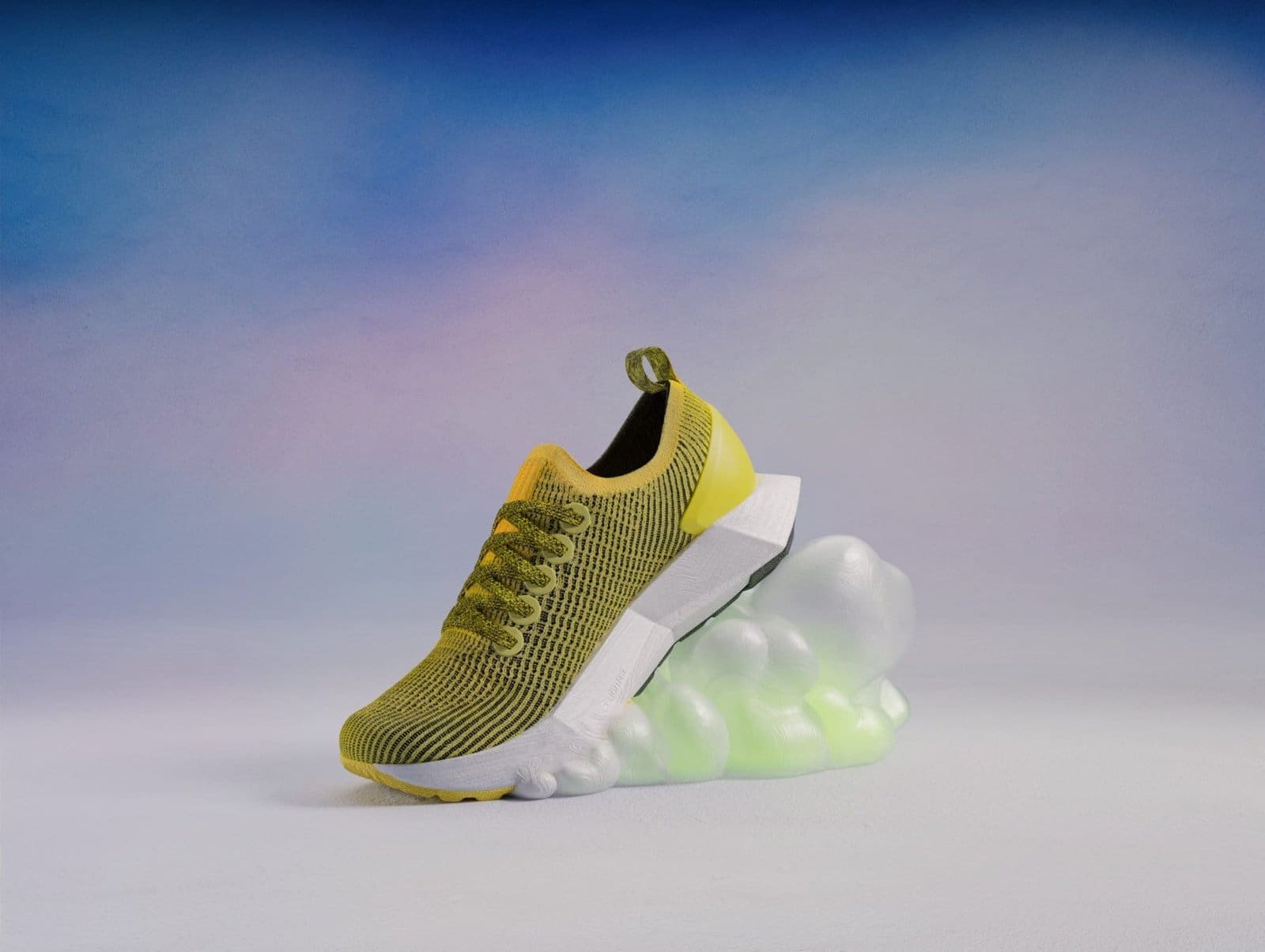Though they may sound futuristic, manufacturers are embracing cutting-edge green materials, from mushroom leather to seaweed silk, in response to a younger generation of environmentally conscious consumers.
SwiftFoam
The word “sustainable” doesn’t typically come to mind when discussing the technology required to make a good pair of running shoes. Research has found that making an average pair of running shoes is equivalent to having a 100-watt non-LED lightbulb on for a week. The performance-focused midsoles that athletes rely on are typically synthetic and petroleum-based. Additionally, those synthetic fibres won’t win the biodegradation race.
But they are not your typical running sneakers. The SwiftFoam midsole of the Allbirds Tree Flyer is created without the use of petroleum. Instead, castor beans are used in its production. In terms of performance, the SweetFoam midsole maintains up with its competitors with a rebound rate of 70%. Any leftover materials from the midsole manufacturing process are then used to create the shoe’s heel.
C-Fiber
Water use and contamination are two of the main environmental and societal problems linked with the creation of cloth (just one cotton shirt requires 3,000 litres of water), so anything that reuses water or, even better, doesn’t use any fresh water at all is a very good thing indeed. Enter the science-meets-fashion company Pangaia, whose recently created smooth C-FIBER fabric is made primarily of eucalyptus and seaweed and is 100 percent biodegradable.
The seaweed is taken every four years, allowing for complete regeneration, and it grows naturally underwater without any further watering. Meanwhile, a closed-loop system is used to convert eucalyptus, which grows swiftly even in dry conditions, into lyocell and recycles 99 percent of the solvents rather than flushing them into the water system.
Mylo Unleather
Mylo Unleather is constructed from mycelium, the root-like systems of fungi, and is produced in a matter of days, despite the fact that it looks and feels like leather. It is certified bio-based, which means that it is primarily created from renewable components that can currently be found in nature, and it consumes a lot less resources to produce than leather. Oh, and while you’re doing it, there’s no need to raise any cows or destroy any forests.
Bolt Threads, the manufacturer, uses vertical labs that are totally powered by renewable energy to simulate the conditions of the forest floor. During her summer 2022 show, Stella McCartney became the first fashion designer to use mushroom leather on the runway. McCartney unveiled the Frayme Mylo, a mylo-made purse that will be sold later this year. Adidas, meanwhile, used the material to replicate its renowned Stan Smith tennis shoes.
Kintra
In 2020, polyester, which will account for 52% of all fibres produced, will be the most widely used fibre in the fashion business. Polyester is harmful since it is created from petroleum, and it won’t degrade for thousands of years. What if, however, there was compostable polyester made from renewable resources? There is, which is fantastic news.
A bio-synthetic polyester with a patent pending called Kintra has demonstrated a 95% reduction in emissions when compared to the manufacture of conventional polyester. Its lifespan can be ended by recycling it or adding it to commercial compost. To keep them out of our rivers and oceans, even its microfibres, which are discharged with each wash, organically decay in wastewater systems. Kintra is being created with extensive use in mind. Later this year, Pangaia will introduce a line constructed using the fibre.
Sympatex
Plastic bottle recycling already operates in a closed-loop system, so when discarded properly, we can easily recycle them numerous times (though not infinitely, so keep using those reusable bottles). But if we interrupt that cycle and turn plastic bottles into polyester thread instead, it will be much harder to recycle them once they have served their purpose.
Enter Sympatex, a partner of Worn Again Technologies that recycles and re-recycles plastic bottles. With Sympatex’s circular system, which is used by British outerwear company The Re-Pete Project to create unisex anoraks, not only are the anoraks already made from the equivalent of 29 plastic bottles, but you can also send them back at the end of their long lifespan and Worn Again Technologies and Sympatex will handle all the recycling to turn them into a brand-new item.
VEGEA Grape Leather
While grape juice makes wine, the remaining skin, seeds, and stems may be used to create a new vegan alternative to leather that is just as appealing. VEGEA grape leather is composed of 75% grape waste and 25% vegetable oil; like most leather substitutes, it needs to be bonded with a plastic, but VEGEA has opted to use an environmentally friendly water-based polyurethane for this purpose.
The issue of leather affects both vegans and the environment. Finding a good non-leather shoe is an excellent place to start for the eco-conscious as footwear makes up 47% of the market for leather items and cattle ranching is responsible for roughly 70% of the Amazon’s deforested territory. For their line of eco-friendly sneakers, the new shoe company Lerins uses VEGEA together with organic cotton, reclaimed cork, and other sustainable materials.

